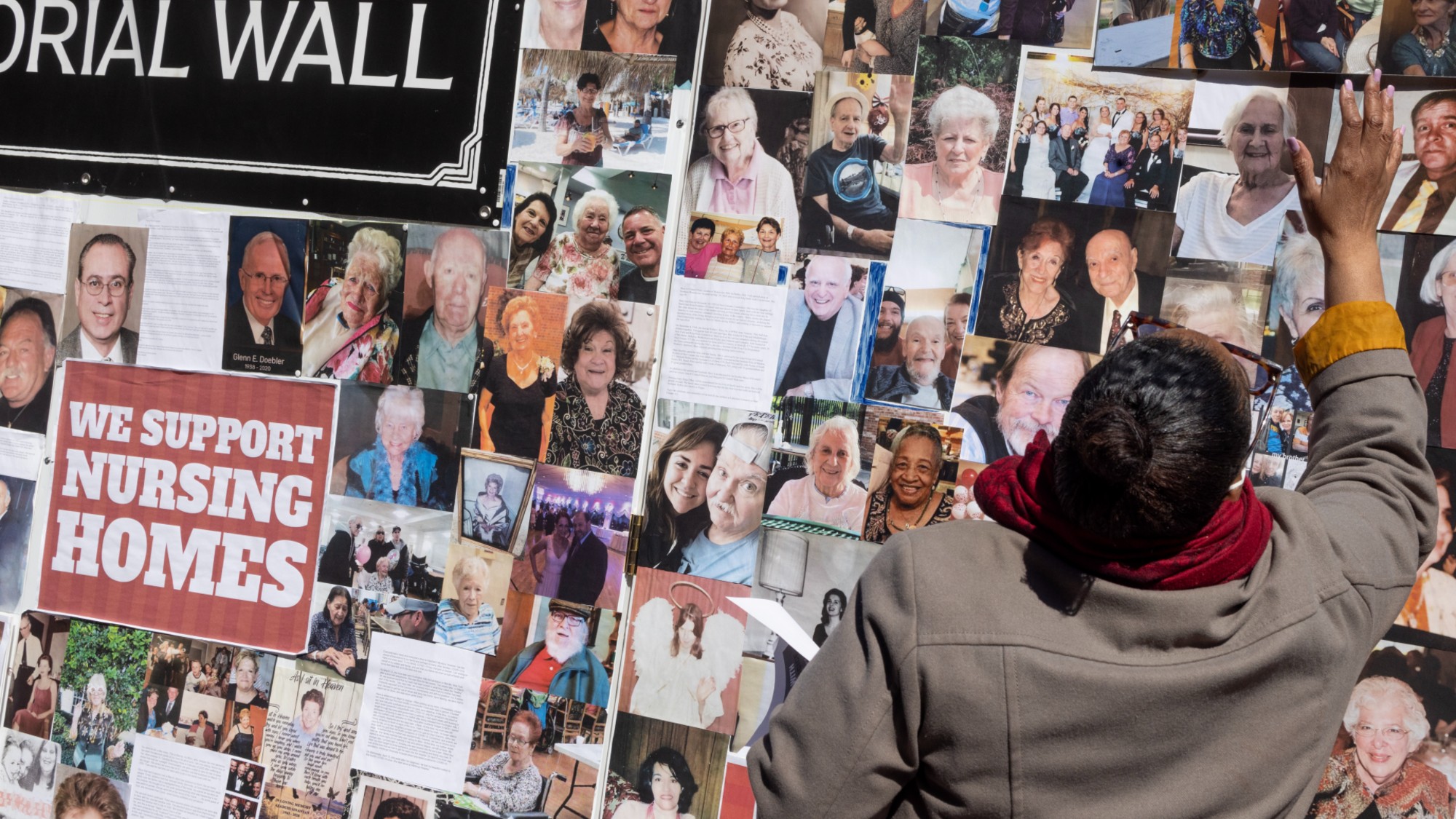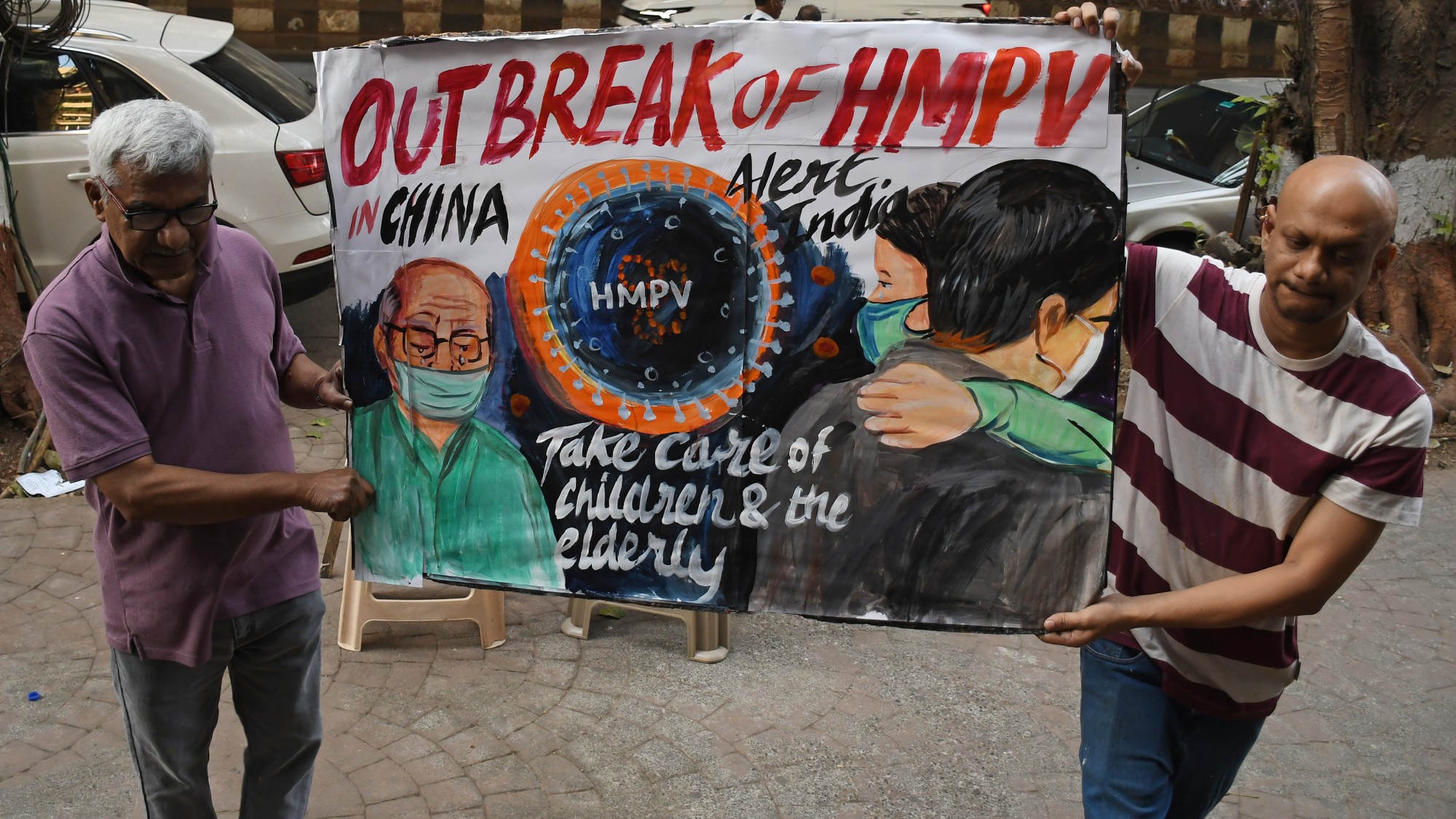First British coronavirus death was passenger on Diamond Princess
Death of British man brings number of victims connected to ship to six

A man who was quarantined aboard the Diamond Princess cruise ship in Japan has become the first British victim of the global coronavirus outbreak.
According to the Japanese Ministry of Health, the unnamed man is the sixth passenger from the stricken cruise ship to have died.
A spokeswoman for Princess Cruises, which operates the ship, said: “All of us at Princess Cruises, including the crew of Diamond Princess, offer our sincere condolences to family members and friends for their loss.”
The Week
Escape your echo chamber. Get the facts behind the news, plus analysis from multiple perspectives.

Sign up for The Week's Free Newsletters
From our morning news briefing to a weekly Good News Newsletter, get the best of The Week delivered directly to your inbox.
From our morning news briefing to a weekly Good News Newsletter, get the best of The Week delivered directly to your inbox.
The Japanese government’s decision to hastily quarantine the Diamond Princess has prompted an outcry from experts, many of whom believe that it has only helped to spread the virus further.
What is happening aboard the Diamond Princess?
On 1 February, a man who had been on the Diamond Princess tested positive for the coronavirus six days after leaving the ship. He had initially boarded in Japan and disembarked in Hong Kong.
Three days later, the cruise docked in the port of Yokohama, Japan, and was put on lockdown by officials from the ministry of health. On 5 February, 10 cases had been confirmed among the 3,700 passengers on the ship.
A free daily email with the biggest news stories of the day – and the best features from TheWeek.com
The New York Times reports that upon docking in Yokohama, guests were advised to stay in their rooms, while medical officers boarded the ship and went door to door taking temperatures, checking for coughs and testing some passengers for the virus.
After a process in which a number of people were disembarked from the ship, only a handful of passengers remain on board.
However, Science Mag reports that there are now 700 confirmed coronavirus cases linked to the Diamond Princess, not counting infections discovered among passengers after they’ve gone home.
Today, a British man became the first foreign passenger to die. His death bringing the toll among passengers from the vessel to six. The remaining victims were all Japanese.
CBS News reports that Friday also saw dozens of passengers allowed off a coronavirus-stricken ship reportedly develop symptoms including fever, with the Japanese Ministry of Health finding that of the 813 former passengers it contacted, “45 people had certain symptoms”.
Why is Japan being criticised?
The quarantine has drawn significant criticism from health experts the world over.
The New York Times notes that the “delay by the Japanese government, along with slapdash and ineffective containment measures during the two-week isolation period”, has “helped turn the Diamond Princess into a floating epidemiological disaster”.
The paper adds that “feverish passengers were left in their rooms for days without being tested for the virus”, while “health officials and even some medical professionals worked on board without full protective gear”.
Last week, Kentaro Iwata, an infection control specialist at Kobe University, posted a scathing video about the conditions on board, which he said were “violating all infection control principles”, alleging there was “no professional infection control person” aboard the ship because “bureaucrats were in charge of everything.”
But others point out that the cruise ship company and the Japanese government were caught in a difficult position.
Isaac Bogoch, a professor at the University of Toronto, told Vox this week: “In a perfect world the passengers could have been let off the ship. But the logistics of letting 3,700 people off a ship and finding appropriate accommodations, medical care, and basic needs — with no warning — would be challenging at best.”
-
 Covid-19 mRNA vaccines could help fight cancer
Covid-19 mRNA vaccines could help fight cancerUnder the radar They boost the immune system
-
 The new Stratus Covid strain – and why it’s on the rise
The new Stratus Covid strain – and why it’s on the riseThe Explainer ‘No evidence’ new variant is more dangerous or that vaccines won’t work against it, say UK health experts
-
 RFK Jr. vaccine panel advises restricting MMRV shot
RFK Jr. vaccine panel advises restricting MMRV shotSpeed Read The committee voted to restrict access to a childhood vaccine against chickenpox
-
 RFK Jr. scraps Covid shots for pregnant women, kids
RFK Jr. scraps Covid shots for pregnant women, kidsSpeed Read The Health Secretary announced a policy change without informing CDC officials
-
 New FDA chiefs limit Covid-19 shots to elderly, sick
New FDA chiefs limit Covid-19 shots to elderly, sickspeed read The FDA set stricter approval standards for booster shots
-
 RFK Jr.: A new plan for sabotaging vaccines
RFK Jr.: A new plan for sabotaging vaccinesFeature The Health Secretary announced changes to vaccine testing and asks Americans to 'do your own research'
-
 Five years on: How Covid changed everything
Five years on: How Covid changed everythingFeature We seem to have collectively forgotten Covid’s horrors, but they have completely reshaped politics
-
 HMPV is spreading in China but there's no need to worry
HMPV is spreading in China but there's no need to worryThe Explainer Respiratory illness is common in winter

